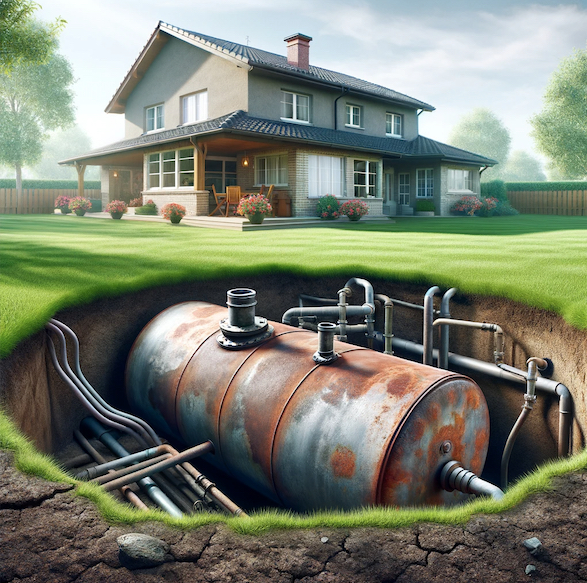I recently had the pleasure of listening to a talk from John S. Pollard of Pollard Environmental LLC. John, who is a VA Certified Professional Geologist, shed light on a topic that many homeowners might overlook: the importance of understanding underground oil tanks and determining whether or not one exists on a property.
John began by delving into the structure of these tanks, explaining the intricacies of their construction, including fill pipes, vent pipes, and the circulation system. He emphasized, “Many of these tanks, especially those installed before 1980, are prone to leakage.” This was surprising. The corrosion of metal tanks over time can lead to holes, especially at the bottom where moisture and sludge accumulate.
One of the most alarming statistics John shared was that “over 70% of the tanks they’ve inspected in Virginia showed signs of petroleum leakage.” While it’s true that most leaking tanks don’t cause significant problems, there are exceptions. John recounted a case in the Virginia Beach area where “a tank with a hole the size of a dime caused a petroleum discharge into a storm drain,” leading to severe environmental concerns.
The potential environmental impact of such leaks is a pretty big problem. From contaminating groundwater to harming local ecosystems, the repercussions of an unchecked underground oil tank can be serious. As potential homeowners, it’s crucial to be aware of these risks, especially when considering properties with a long history.
John also touched upon the potential for tanks to collapse over time due to metal deterioration. Although this hasn’t been widely observed yet, it’s something homeowners should be aware of. He concluded by discussing a common test used by heating oil companies to detect tank leaks, known as the “water test” or “paste test.” This test, while simple, can be a lifesaver for homeowners, ensuring that their property is safe from potential leaks.
Now, if you’re a homeowner or a potential homeowner, you might be wondering, “What can I do to ensure the safety of an underground tank?” Here are some steps and considerations based on John’s insights:
- Identification: First and foremost, identify if there’s an underground tank on the property. Look for fill pipes, which are usually cut off and flush with the ground, and vent pipes with a mushroom cap on top. These are usually up against the side of the house. A good home inspector should be able to help you with identification.
- Age of the Tank: Understand the age of the tank. If it’s the original tank from before the 1980s, it’s probably at least 40 years old. The older the tank, the higher the risk of leakage.
- Physical Inspection: Check for any visible signs of leakage around the tank area. John mentioned that over 70% of the tanks they’ve tested indicated a petroleum leak, especially around the bottom of the tanks.
- Professional Assessment: If you suspect any issues or just want peace of mind, get a professional to assess the tank’s condition. They can test for any leakage and provide recommendations on next steps.
- Ground Stability: While John mentioned that they haven’t seen tanks collapsing yet, it’s essential to monitor the ground above the tank for any settling or sinking. This could indicate deterioration of the tank below.
- Water Testing: If you have a well or any groundwater source near the tank, get it tested for petroleum contaminants. John shared a case where petroleum from a leaking tank contaminated drinking water wells in a neighborhood.
- Removal or Replacement: If the tank is old, leaking, or poses a risk, consider removing it or replacing it with a newer, safer model. This is a significant step but can prevent potential environmental and health hazards in the future.
In conclusion, understanding the state and potential risks of underground oil tanks is paramount when purchasing a home. As John S. Pollard expertly highlighted, it’s not just about the aesthetics or location of a property; it’s about ensuring the safety and longevity of your investment. So, the next time you’re considering a property, make sure to delve deep, quite literally, and check for those underground tanks. Your future self, and the environment, will thank you.

 Facebook
Facebook
 X
X
 Pinterest
Pinterest
 Copy Link
Copy Link


